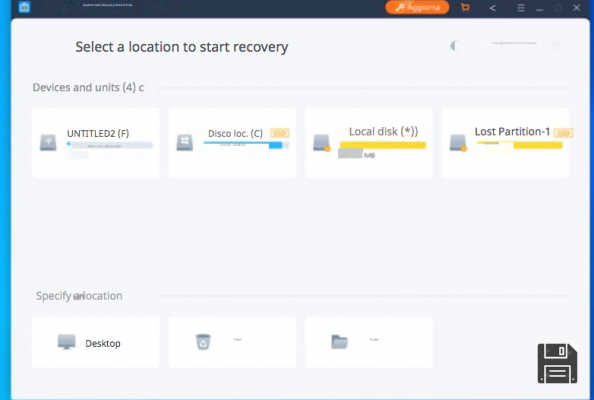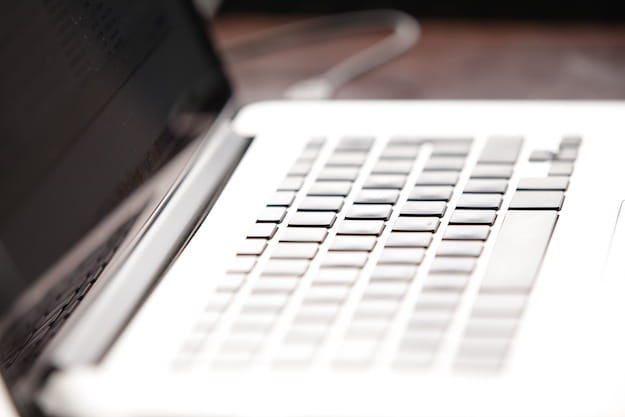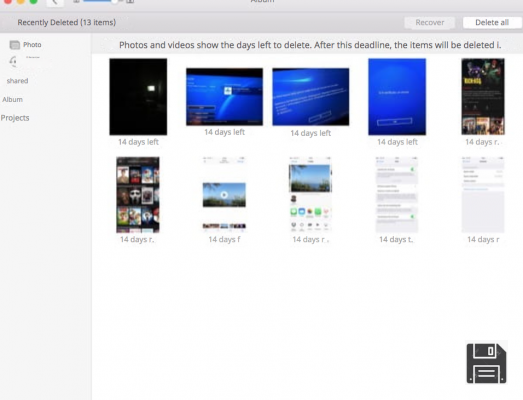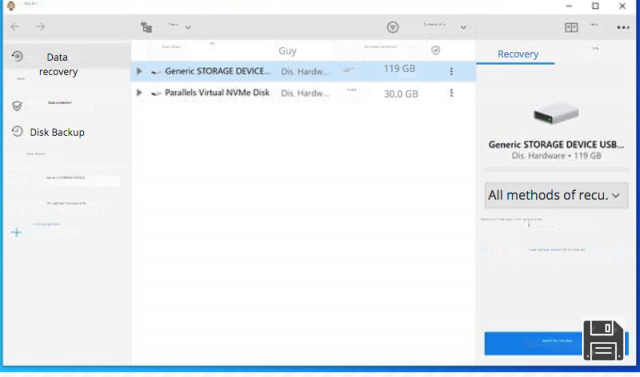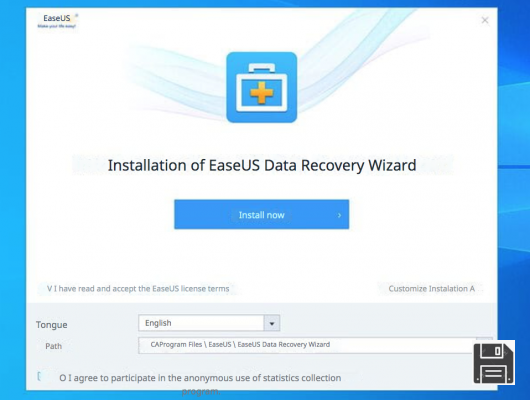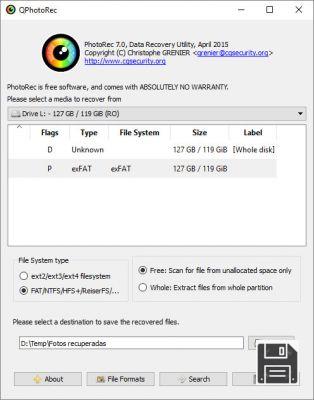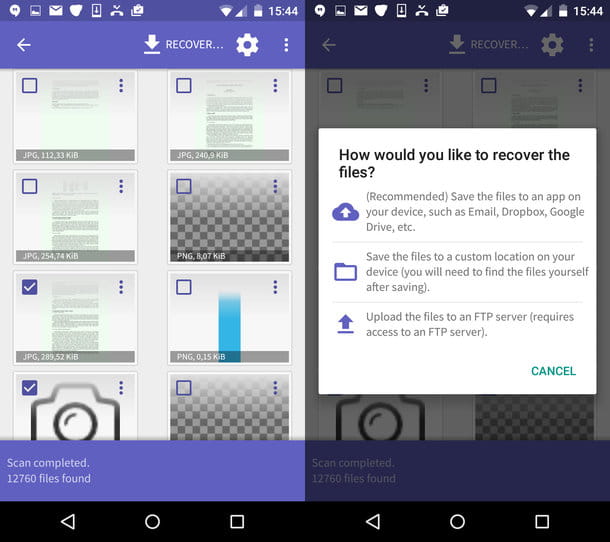You've just realized that you've mistakenly deleted an important folder from your computer and would like to know if there's a quick and "painless" way to deal with it? Have you deleted a folder from your mobile phone's memory and would you like to see if you can fix it? Lucky for you, you happened upon the right guide at the right time. If you give me a few moments of your precious time, in fact, I can show you how to deal with the situation.
Starting from the assumption that yes, it is possible to recover a deleted folder, in the following lines I'm going to show you, in a simple but not so detailed way, how to do it using some special functions provided by the various operating systems and ad hoc applications.
Before proceeding, however, know that the success of the operation depends on several factors: first of all the activation or not of the backups (local or cloud) on the device and then the state of the memory. You should know, in fact, that if the memory sectors containing the folders of your interest are overwritten by new data, you won't be able to do much. Is that clear? Well, then I wish you a good read and good luck with everything!
How to recover deleted folder from PC
Are you using a computer with Windows installed and would you like to understand how to recover a deleted folder from it? Then follow the instructions below. I'm already anticipating that you can do it, depending on the circumstances, by working on the Recycle Bin, using a backup feature built into the latest Microsoft operating systems and data recovery programs.
How to recover deleted folder from Trash
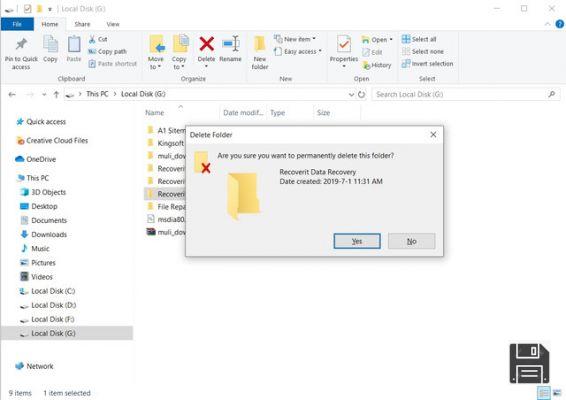
If you have recently deleted a folder and you haven't emptied the Windows Recycle Bin yet, I have a good news to give you: it is still inside and you can retrieve it directly from there.
To do so, double-click the Recycle Bin icon on your desktop and locate the deleted folder from the File Explorer window that appears on your screen. If you want, you can help with the search by typing in the name of the folder in the top right hand corner of the repository.
Once you've found the folder you want to recover, click on it and, while continuing to keep clicking, drag it out of the Recycle Bin window, releasing it to the location of your choice. Alternatively, after selecting the folder, click on the Recycle Bin Tools button at the top of the Recycle Bin screen, select Restore selected items from the menu that appears and the folder will automatically be moved to its original location.
File history

If you're using a computer running Windows 10 or Windows 8.x and you've activated the File History feature, you can restore one or more folders that you erased erroneously by going to their original location and selecting History from the Home tab in File Explorer.
Alternatively, you can proceed as follows: click on the Start button (the one with the Windows flag located in the bottom left corner of the screen), search for "restore file" in the menu that opens and start the procedure to restore files with File History by selecting the appropriate icon in the search results.
PhotoRec

If the solutions to recover a deleted folder that I have already suggested you to consider proved to be ineffective, you can try PhotoRec. It is an open source software that allows you to recover various types of files in a few clicks. It's free and doesn't need installation to work. Note that it comes in conjunction with TestDisk, another free program that allows you to recover lost partitions and make bootable disks that are no longer bootable: it is very effective, but you shouldn't need it at the moment.
That said, to download PhotoRec to your PC, connect to the program's website and click the Windows item. When the download is finished, extract the ZIP archive from any location and start the qphotorec_win.exe executable inside it.
In the window that opens, expand the drop-down menu at the top and select the drive from which you want to recover the contents of the folder. Then click on the entry corresponding to the main partition of the drive and press the File Formats button, to select the file types that were present in the deleted folder of your interest.
Then, put the check mark next to FAT/NTFS/HFS+/ReiserFS option, click the Navigate button and select the location where PhotoRec should save the files it can locate. To finish, click the Search button and wait for the data recovery to complete. More comfortable than this?
Recover

Another software that you can rely on to recover a deleted folder from your PC is Recuva. It is, in fact, a tool that allows you to recover photos, videos, compressed archives, Office documents and other types of files from various storage media and devices: hard drives, USB sticks, SD cards, portable media players etc. It is totally free and very easy to use
To download Recuva to your computer, visit the program's website and click the Download Free Version, Free Download and Download buttons. When the download is complete, open the obtained .exe file and click the Yes button in the window that appears on your desktop. Next, select the language or from the drop-down menu for language selection, in the top right corner, uncheck the items related to the installation of any additional programs and press the Install button. When installation is complete, click on the Run recuva button.
Now that you see the main window of the program on your screen, click the Next button, select the type of files that were present in the folder you want to recover and click the Next button again. Now, select the location where you want to search for the data (leave the I'm not sure option selected, to search all drives) and click on the Next and Start buttons, to start the scan
At the end of the check, place a check mark next to the name of the folder to be restored and click on the Retrieve button, to select the location where to save everything. Please note that the data is marked with colored traffic lights: those in green are 100% recoverable, those in orange can be restored but are probably damaged, while the files marked in red are almost completely unreadable.
In case Recuva cannot find the items you are interested in, try to restart the program and select the Enable deep scan option on the last home screen. In doing so, Recuva will carry out a more in-depth analysis and thus increase the possibility of finding what in the standard scan did not appear.
How to Recover Deleted Mac Folder
Do you own a Mac and would you like to figure out how to recover a deleted folder from it? Then follow my instructions on what to do in the next steps. I'm already anticipating that you can do this by working on the Recycle Bin, using Time Machine or using special programs. Good luck!
How to recover deleted folder from the Trash

If you have recently deleted a folder and have not yet emptied your Mac Trash, it is still there and can be retrieved by simply returning it to where it was previously (or moving it to a different location on your hard drive). How do I do this? I'll explain it to you right now.
First, click on the Recycle Bin icon on the Dock bar and search for the folder to retrieve in the window that opens. To help you, you can do a keyword search by typing the folder name in the top right bar and selecting the Recycle Bin item from the Search in menu just below. You can also sort files by type by clicking the gear button on the toolbar, selecting Sort by from the menu that appears, and choosing the option you prefer.
Once you find the folder you want to recover, click on it and, while continuing to keep clicking, drag it out of the Recycle Bin window and drop it to the location where you want to save it.
Time Machine
Time Machine is a tool that's available on all Macs, so you can automatically back up data on disk and, if necessary, view and restore old versions of files and folders.
To take advantage of the features offered by Time Machine, however, it is essential that the tool has been previously configured. To make sure of this, click on the Time Machine icon (the one with the arrow clock) at the top right of the macOS menu bar, click on the Open Time Machine preferences item from the menu that appears and, in the window that appears on the screen, make sure that there is a check mark in correspondence with the words Run backup automatically.
If this option is enabled, to recover the folder that you deleted by mistake, proceed as follows: Open the Finder (by clicking on the smiley face icon on the Dock bar), go to the location where the folder was before its deletion, click on the Time Machine icon located on the macOS menu bar and choose the Join Time Machine option from the menu that is shown to you.
Now, use the time bar or the directional arrows on the right side of the screen to reach the date when the folder you want to restore was still there, right-click on the folder icon and choose Restore from the context menu shown (to return it to its original location) or choose Restore [name] on (to save it to a different location).
When you're done, to exit Time Machine, click the Cancel button located just below the Finder window in the center of the screen. That's it!
Disk Drill

Have the systems to recover a deleted folder from the Mac that I have already indicated to you proved ineffective or are you looking for an alternative? Then consider using Disk Drill. It is, in fact, one of the best data recovery software around. It allows you to work on your computer hard drive as well as external hard drives, SSD drives, USB sticks, memory cards and other FAT, NTFS or HFS+ formatted drives. It is a paid version (costs €100.49), but is available in a trial version that lets you find out which files can be recovered.
To download Disk Drill on your Mac, go to the program's website and click on the Download Free button. Once the download process is complete, open the obtained .dmg package and drag the icon of the software inside it into the MacOS Applications folder, then right-click on it and select the Open item from the context menu.
On the screen that appears, click the Start button, type in your Mac administration password and press the Enter key on your keyboard to display the main Disk Drill window. Next, select your Mac hard drive and press the Recover button next to it to start the scanning process.
When the analysis is complete, locate the folder to be recovered in the list that is shown to you. You can also help yourself with the search bar at the top and the filters you can select from the drop-down menus at the top. Once you've found the folder, select it by checking the box next to its name and, if you've purchased the full version of Disk Drill, press the Recover button to export it to a location of your choice.
How to recover deleted Android folder

Let's see, now, how to recover a deleted folder by intervening from smartphones and tablets, more precisely from Android. In this case, you can use DiskDigger to succeed. It is an application that allows you to recover any type of deleted file. You can use it to restore the contents of any folder. It works with both internal memories and SD cards and does not require root, although unlocking the device can be useful to recover a larger amount of data. It is available in a free version that lets you recover only JPG, PNG and MP4 files (i.e. only photos, screenshots and videos), and in a Pro variant, for a fee (at a cost of 3.37 euros), which also lets you work on other file formats.
To download the application to your device, visit the relevant section of the Play Store and tap the Install button. Then, launch it by tapping the Open button that appears on the display or by selecting the icon that has just been added to the drawer.
Once the main screen of the app is displayed, give it root permissions (if you have unlocked your device), choose whether or not to switch to the paid version (according to your needs) and select the item related to the memory to be scanned.
Then, tick the boxes next to the file formats that were contained in the folder you want to restore and tap the OK button to start the analysis procedure. When you are done, select the files you are interested in recovering, tap on the Recovery button at the top and tap on the folder symbol (to export to a specific location) or the cloud symbol (to save files to supported cloud storage services).
In case the use of DiskDigger should prove to be ineffective, you can consider recovering deleted folders from your Android device via computer, using the software I described in the steps at the beginning of this guide for Windows and MacOS, depending on the operating system you use. The only caution you need to take in this case is to connect your smartphone or tablet to the PC via cable and select the latter as the location to search for the folder to restore.
How to recover deleted iPhone folder

It is also possible to recover a deleted folder on the iPhone (and iPad), although computer software that specializes in restoring deleted data from smartphones and tablets and, more precisely, from iOS (and iPadOS) should be used. Of course, you must first connect your iPhone to your computer using a cable before you can use it.
In addition to the above, if you have iCloud enabled on your iPhone, you can try to recover the folder removed from your device by looking at the list of deleted files on the device. To do so, open the browser you usually use to surf the web from your computer (e.g. Chrome), go to the iCloud home page and log in to your account.
Once you are logged in, select the Restore file item located at the bottom left, under the Advanced section, search for the folder you want to recover from the screen that opens, and if there is one, select the box next to it and click on the Restore button to proceed. Next, you will find the restored folder in the location where it was originally located.
How to recover deleted folder from external hard disk
If you have mistakenly deleted one or more folders from an external hard drive, I am pleased to inform you that, again, you can proceed with the recovery, acting as a computer.
To do this, all you need to do is to connect the reference disk to your PC and use the programs I described in the steps at the beginning of this guide for Windows and MacOS, depending on the operating system you are using. It doesn't change anything at all, the only thing you have to take into account is that the location where to look for the folder to recover is, of course, the external hard disk.
How to recover deleted folder from USB
Even if you have deleted a folder from a USB flash drive, you can try to recover it using the Windows and MacOS software I explained in the steps at the beginning of this article.
All you have to do is connect the pendrive you are interested in to one of the USB ports of your PC and then follow the instructions for data recovery that I have already provided, taking care, however, in this specific case, to select the external drive just connected as the reference location.





